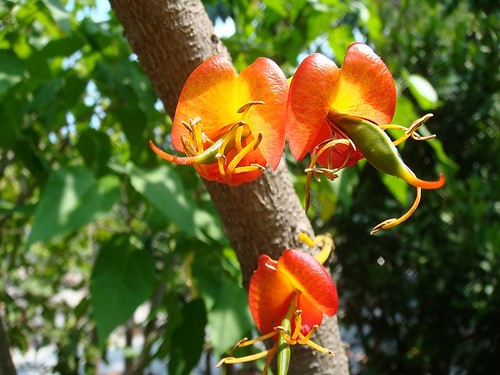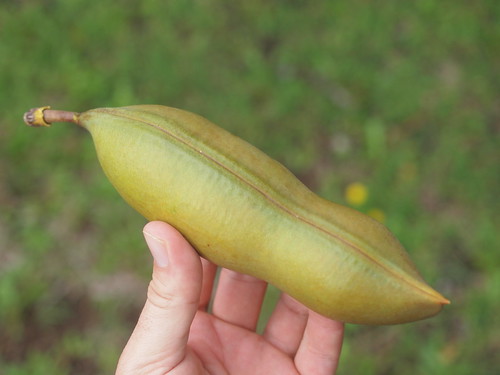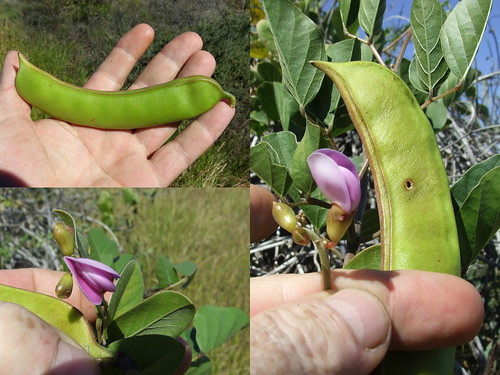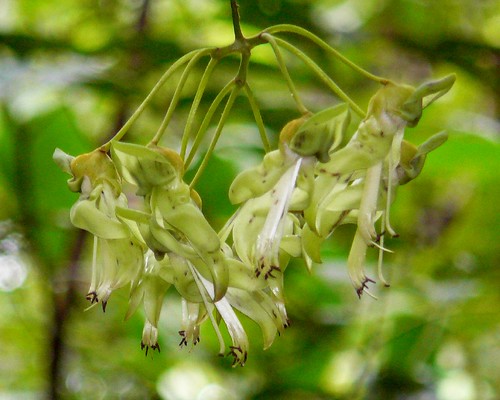 |
| The black bean |
Although no Australian member of this group has
been seriously exploited as a food crop, some have been important as
food for both aborigines and for the early European colonists. However,
as some of the latter found to their cost, many of the native "peas" are
also toxic unless the seed is prepared correctly. This usually involves
soaking to leach out the toxin or heating to destroy the toxic
chemicals.
Some of the species used for food include:
- Castanospermum australe, the black bean. The seeds of this species are toxic when raw and are prepared by roasting or soaking in water.
The Black Bean has also proved valuable as a timber species, it's seeds have been utilized - following extensive preparation as a food by Aborigines and it contains alkaloids which have been shown to have anti-HIV and anti -cancer properties.
 | |
| Coastal Jack, Canavalia rosea (toxin removed by heat). This plant was eaten by members of James Cook's expedition in 1770. |
"Horses and cattle are more susceptible to poisoning than sheep, but sheep have been poisoned by bluebush pea (Crotalaria eremaea ssp. eremaea) in western Queensland. Poisoned horses develop a condition called "walk-about disease" or "Kimberley horse disease" in which they become unaware of their surroundings and wander blindly. A major cause of this poisoning is Crotalaria crispata, a small plant common in the Kimberley region of Western Australia. Other Crotalaria species cause the disease in the remainder of tropical Australia.

Dr Ross McKenzie, 1993 Bill Tulloch Memorial lecture to the Queensland Region of the Society for Growing Australian PlantsMore Information:
http://www.anpsa.org.au/peas1.html
http://www.nationalregisterofbigtrees.com.au/listing_view.php?listing_id=793
Images @ Eminpee Fotography




No comments:
Post a Comment